Saturday, January 29, 2022
Pompeii
 Girl Attaching a Peplum Statue | A small port on the Sarno River, Pompeii had thrived as a Roman colony for over two centuries. Its inhabitants knew nothing of Mount Vesuvius’s previous eruptions, which dated to the seventh century B.C. |  |
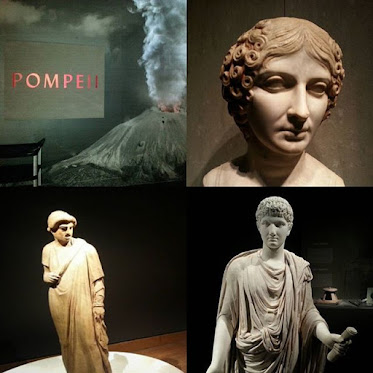 | New discoveries from Pompeii give insight into the daily life of the Roman town before the cataclysmic eruption of Mount Vesuvius.  | 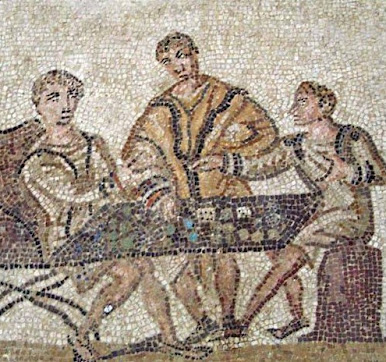 |
 |  |
Thursday, January 27, 2022
Special ancients bring top dollar
Two Dekadrachms from the time of Dionysios I were auction stars.
A phenomenal Elagablus Aureus graded NGC Ch MS★, Strike: 5/5 Surface: 4/5 brought $312k, and a Septimius Severus Aureus graded NGC Ch AU, Strike: 5/5 Surface: 3/5 made $192k.
 | One signed by Kimon and graded NGC Ch VF ★ Strike: 5/5 Surface: 5/5, and the other signed by Euainetos and graded NGC Ch EF★ Strike: 5/5 Surface: 4/5. The Kimon coin sold for $360k and the Euainetos for $198k, both well exceeding their estimates. |  |
Monday, January 24, 2022
Golden curse tablets found in ancient Serbian tomb
 | In 2016 archaeologists in Serbia discovered golden curse tablets in ancient Roman tombs. The tablets contain inscriptions with magical symbols calling upon both gods and demons to unleash ill-health, punishment, and death upon enemies, unrequited lovers, bad neighbors and relatives. |  |
 | The curse tablets were found in Roman tombs at the Viminacium archaeological site, the capital of the former Roman province of Moesia Superior in Serbia. The territory was under Roman (and later Byzantine) rule for about 600 years, from the 1st century BC until the 6th century. Viminacium occupies a total of about 450 hectares (1,100 acres) |  |
 | “..so long as someone, whether slave or free, whether man or woman, keeps silent or knows anything about it, they may be accursed in blood, and eyes and every limb and even have all intestines quite eaten away if they have stolen the ring or been privy (to the theft).” Other curses are even more personal ... “May your penis burn away when you make love.” |  In Viminacium, Christians and pagans buried together suggests they were living together in relative harmony. |
Sunday, January 23, 2022
Aqrabuamelu - Scorpion men
 | Scorpion men are featured in several Akkadian myths, including the Enûma Elish and the Babylonian version of the Epic of Gilgamesh. They were also known as aqrabuamelu or girtablilu. The Scorpion Men are described to have the head, torso, and arms of a man and the body of a scorpion. Their "terror is awesome" and their "glance is death." | 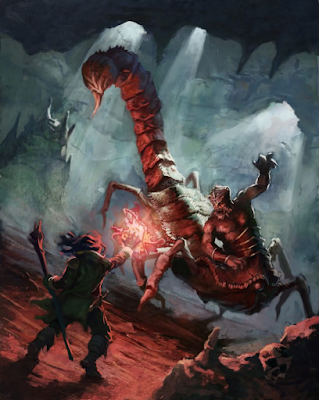 |
Saturday, January 22, 2022
The mysterious fate of “The Apollo of Gaza”
 The statue is unique and most experts say priceless. It's current whereabouts remains unknown. | The finder said he cut off one of the fingers to take to a metals expert, thinking it might have been made of gold. Unbeknownst to him, one of his brothers severed another finger for his own checks. This was then melted down by a jeweller. It is very rare to find a statue which is not in marble or in stone, but in metal. 5,000 years of history lie beneath the sands of the Gaza Strip, which was ruled at various times by ancient Egyptians, Philistines, Romans, Byzantines and crusaders. Alexander the Great besieged the city and the Roman emperor Hadrian visited. |  |
Friday, January 21, 2022
Roman gold : Coins of the Twelve Caesars
 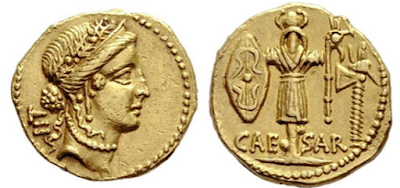 | Gaius Julius Caesar (born 13 July 100 BCE), belonged to the Caesares family of the large Julian clan. He would live to make the name “Caesar” a title for emperors and their sons; a title that would endure for millennia, becoming Kaiser in German and Tsar in Russian. Few of Caesar’s gold coins bear his portrait; many depict an uncertain female goddess. A rare example struck by a military mint moving with Caesar’s army in 48-47 BCE sold for over $300k. | 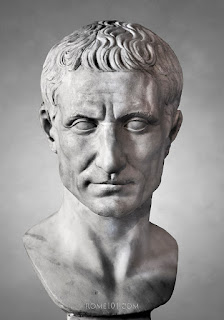 |
 | Caligula was born in the year 12. His father Germanicus was a successful, popular general. Caligula’s mother, Agrippina was the daughter of Marcus Agrippa, the organizer behind Octavius’s victory in the civil war. Caligula’s silver and gold coins are scarce. |  Following the murder of Caligula (24 January 41), the Praetorian Guard declared his uncle Claudius, aged 51, as emperor. Claudius proved to be an effective ruler for the next 13 years. |
 In numismatics, Nero is remembered as the depraved emperor who debased Roman coinage. | Nero is remembered as a depraved emperor. Nero’s gold coins survive in large numbers and are the most affordable aurei of the Twelve Caesars. |  |
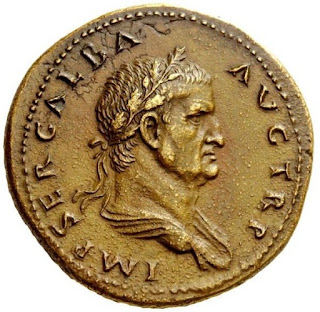 | Nero’s suicide resulted in another civil war. Servius Sulpicius Galba was proclaimed emperor by his legions. Galba’s coinage is abundant. |  Aulus Vitellius was born in 14 CE. Galba appointed him commander of the legions in Germania. He defeated Otho’s forces and occupied Rome in June, 69. He lasted eight months. When the legions of the East under general Vespasian advanced on Rome, he was hunted down and killed on December 22. The coinage of Vitellius is scarce. |
 | Titus Flavius Vespasianus was the son of a tax official. He rose through the ranks and distinguished himself in the invasion of Britain (43 CE). In 67, Nero sent him to crush the revolt in Judaea. On July 1, 69, the legions proclaimed Vespasian emperor at Alexandria. Titus was 40 when he succeeded his father but lived only two years. |
 His most famous coin is a very rare bronze sestertius depicting the Colosseum. An example sold for $155k. | The Arch of Titus in Rome marks the destruction of Jerusalem. |  Domitian was about 30 when he succeeded his elder brother Titus. His coinage was prolific. |
Subscribe to:
Comments (Atom)
















